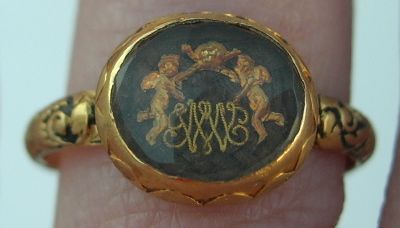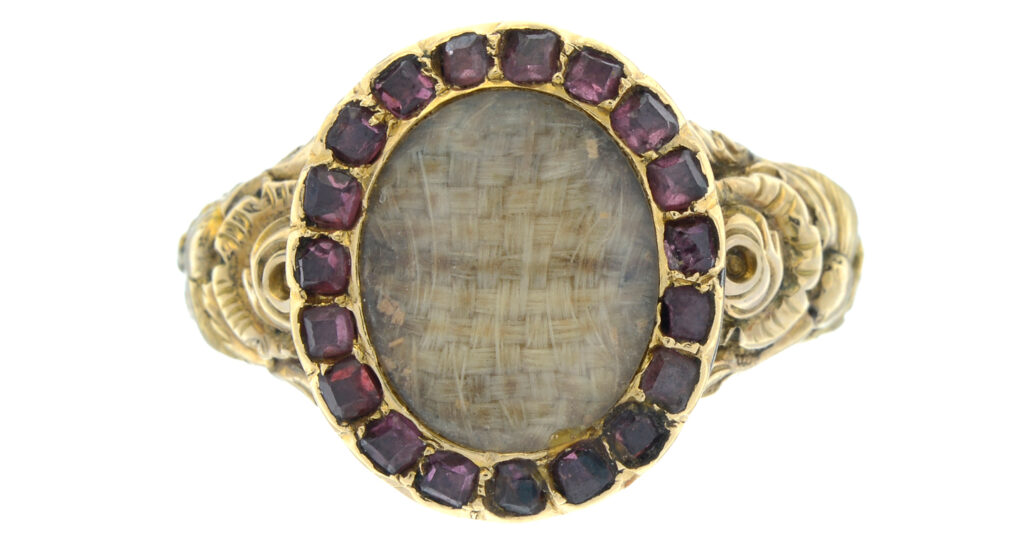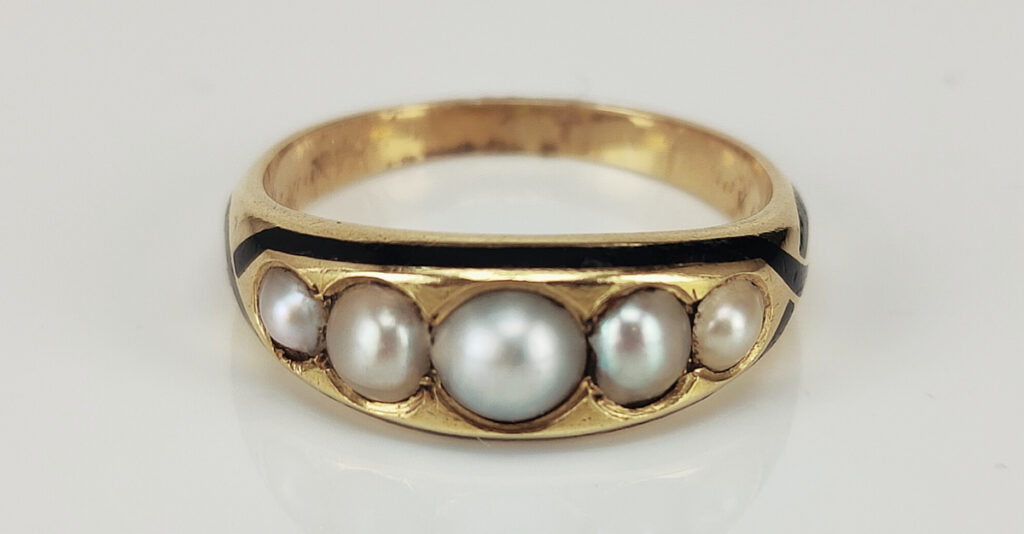17th Century Crystal Memento Mori Ring: A Study
Rings of the late 17th century are the predecessors to many of the ring styles that followed through to the 19th century. They are also becoming harder and harder to find, as many were worn for their intent (as opposed to being hidden away as keepsakes) and they’ve survived many modern recessions that saw some beautiful pieces get broken down and melted for their gold.
So, when a piece like this appears, it’s worthwhile to take note. This particular piece is a testament popular art and sentimental symbolism of the late 18th century and shows many of the conventions that bred the mourning industry.
Firstly, we have the memento mori symbolism, which is often what many collectors gravitate towards. This particular piece is unusual, as the two cherubs are flanking/carrying the skull and crossbones that forms the central part of the motif under the crystal. Underneath this is the woven hair memento, of course. I should point out that the common title for crystal of this period is ‘Stuart Crystal’, due to the reign of the Stuarts, however, I often tend to refer to the material as simply ‘crystal’, due to latter pieces not under the reign with crystal being produced. The crystal is often faceted, with later examples often being domed or curved and the shape is essential to dating pieces. Look for more rounded bezels to be earlier (c.1680) examples and octagonal/harder edged examples to be closer to c.1700.
Next to the cherubs is the gold wire cipher initials on top of the hair, which is also common of the time, often for sentimental or fashion, rather than just for mourning. The hairwork underneath was quite often material, rather than hair, but examples vary.
The setting of the ring is pronounced on the finger, showing enamel under the bezel, another common feature, that in this piece shows much of the wear. As for the shank, there is loss to the enamel acanthus motif/design that runs down the sides of the band, but this is often the first area where much of the loss can occur with these pieces.
Certainly, what little of these rings exist in the world should be coveted and protected. They hold a style which existed and remained adapted though c.1660-c.1740 and were used across much of the mainstream jewellery design of the period.









